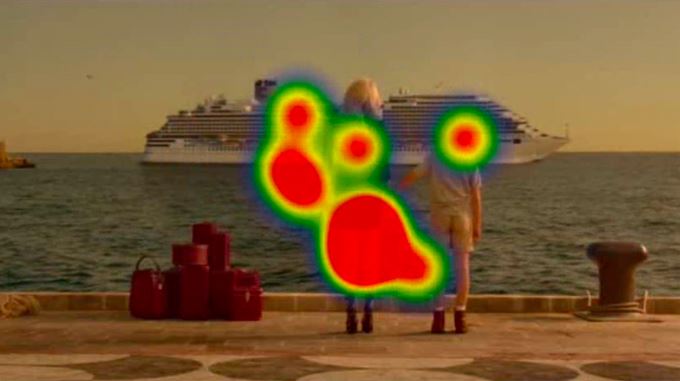Eye tracking is a technology used in neuromarketing to test commercials. The Costa Cruises case is an example of this
Neuromarketing tests can help a company make important decisions, especially in the product development phase. In fact, this situation is the optimal condition, as it allows you to optimize the value of the results collected during the tests, make the changes and arrange the object of analysis.
To make these words concrete, here is a fitting example: Costa Cruises.
Following the tragic accident in which a cruise ship was wrecked off the island of Giglio due to an unexpected impact with rocks, serious doubts arose regarding the airing of a spot already filmed and in the finalization stage. The reason for these perplexities lay in the possibility that the mental association between reefs and cruise ships, generated by the event, could cause damage to the corporate image rather than bring benefits.
Neuromarketing tests and eye tracking
In the storyboard of the commercial, Shakira is preparing to experience her next adventure aboard a Costa Cruises ship. The climax of the commercial comes when, on a pier, together with her baby, Shakira sees the ship on which she would soon board appear from behind a promontory.

What was the company’s concern? The fear was that, following the tragic accident, the presence of a promontory in the background of a Costa Cruises voyage could arouse anxiety in the viewer, creating an association between the advertisement and the accident that occurred. It is evident that, as in every commercial, the creation of the storyboard implies the transposition of concepts, and it is not always possible to obtain the desired result, nor to keep all possible side effects under control. The investment to shoot the spot had already been made. Faced with this dilemma, there were two possible scenarios:
- take the risk of generating a negative impact and keep the ad on the air;
- lose your investment with no data to support that decision.
Costa Cruises, in collaboration with TSW, has opted for a third way.
Carry out a neuromarketing test with eye-tracking to evaluate the effective perception of potential viewers and, based on these results, evaluate whether it was necessary to make changes in the editing of the video.
Using eye tracking while watching a commercial
Actually, even before understanding whether the promontory could be a problem, the question we asked ourselves was: do people notice the presence of that juncture in advertising and consequently are they in a position to process the “promontory” information?
In the research we used eyetracking technology, which allows you to accurately trace the movements of the eye, emphasizing the elements on which the gaze rests, processing or memorizing information. Once collected, the data was processed by integrating the information over time, among the people involved, so as to obtain as output a dynamic heatmap relating to the entire duration of the video. This map shows the “hot spots” of an image, a site, or in this case a commercial, i.e. the areas that were able to attract the visual attention of the participants.
From the analysis of the results that emerged, it is highlighted how the ocular behavior is quite uniform throughout the video, detecting a gaze and attention focused almost constantly on the central part of the image and on the faces of the characters. Only the presence of the ship has elicited a different behavior.
As you can see from the video, in the short seconds between the 12th and 15th, there isn’t even attention focused on the headland, thus demonstrating complete assurance that attention is completely focused on Shakira and the ship. In support of these data, a final interview was conducted with all the participants, during which the presence of any reference to the dynamics of the Costa Concordia was assessed. Not only did this association not emerge spontaneously, but not even when it was directly induced.
This real case represents a concrete example of the value and crucial role of research and how it can help make informed decisions, based on objective information, which are fundamental for interpreting people’s perception.